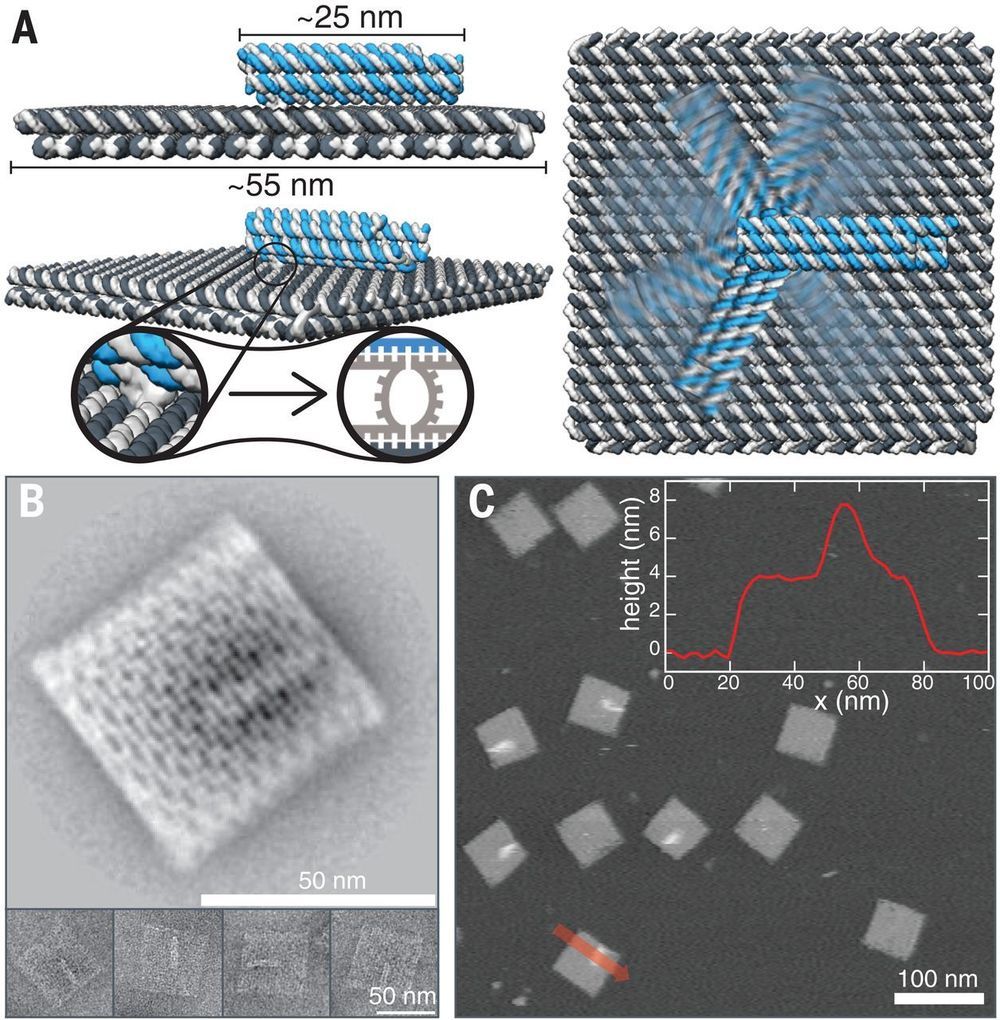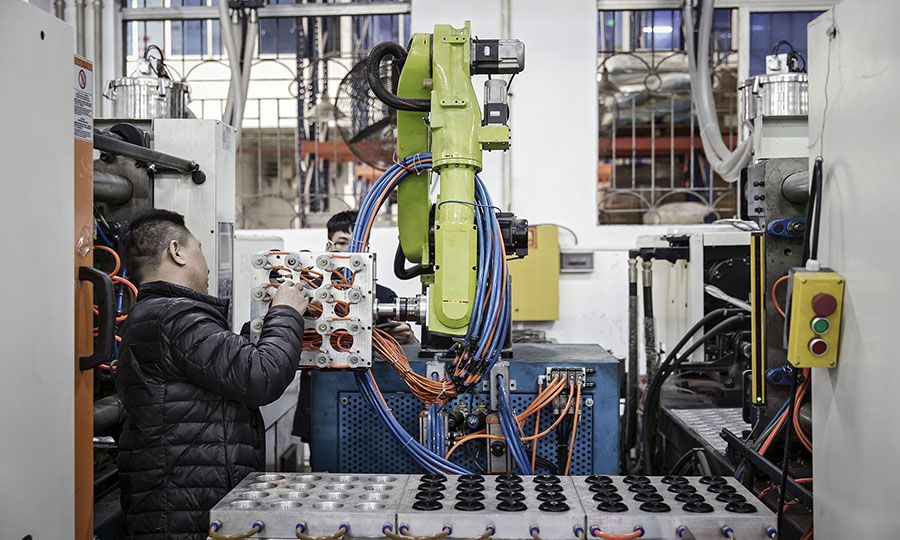Oh yes.
Robots that can rapidly plan out their movements could accelerate factory automation—and help keep fragile humans safe.

A research group from RIKEN and Kyushu University has developed a new type of material, based on ethylene, which exhibits a number of useful properties such as self-healing and shape memory. Remarkably, some of the materials can spontaneously self-heal even in water or acidic and alkali solutions. The new material is based on ethylene, a compound that is the source of much of the plastic in use today.
Materials that can self-heal have become a popular area of research during the last decade, and a variety of materials have been developed. However, most of the self-healing materials reported to date have relied on sophisticated designs that incorporate chemical mechanisms into polymer networks, such as irreversible or reversible covalent-bond formation, hydrogen bonding, metal-ligand interactions, or ionic interactions. As a result, they require some external stimulus, such as heat or pressure, to prompt them to heal, and in most cases, they do not function in water, acid or alkaline solutions because the chemical networks cannot survive such conditions. The ideal is to create a material that possesses sufficient toughness and can autonomously self-heal under various conditions.
For the present research, published in the Journal of the American Chemical Society, the researchers used a catalyst based on scandium, a rare metal, to create polymers composed of alternating sequences of ethylene and anisylpropylenes and shorter ethylene-ethylene segments by the copolymerization of ethylene and anisylpropylenes. This new class of well-defined, functionalized polyolefins ranged from soft viscoelastic materials—materials that can be both elastic but also exhibit liquid-like properties—to tough elastomers, which can be stretched but return to their original shapes, and rigid plastics. The elastomer copolymers were very elastic, and tough, and also showed remarkable self-healing property, as they autonomously self-healed when subjected to mechanical damage not only in a dry environment but also in water and aqueous acid and alkaline solutions, without the need for any external energy or stimulus.

Most nanoelectromechanical systems are formed by etching inorganic materials such as silicon. Kopperger et al. improved the precision of such machines by synthesizing a 25-nm-long arm defined by a DNA six-helix bundle connected to a 55 nm-by-55 nm DNA origami plate via flexible single-stranded scaffold crossovers (see the Perspective by Hogberg). When placed in a cross-shaped electrophoretic chamber, the arms could be driven at angular frequencies of up to 25 Hz and positioned to within 2.5 nm. The arm could be used to transport fluorophores and inorganic nanoparticles.
Science, this issue p. 296; see also p. 279
The use of dynamic, self-assembled DNA nanostructures in the context of nanorobotics requires fast and reliable actuation mechanisms. We therefore created a 55-nanometer–by–55-nanometer DNA-based molecular platform with an integrated robotic arm of length 25 nanometers, which can be extended to more than 400 nanometers and actuated with externally applied electrical fields. Precise, computer-controlled switching of the arm between arbitrary positions on the platform can be achieved within milliseconds, as demonstrated with single-pair Förster resonance energy transfer experiments and fluorescence microscopy. The arm can be used for electrically driven transport of molecules or nanoparticles over tens of nanometers, which is useful for the control of photonic and plasmonic processes. Application of piconewton forces by the robot arm is demonstrated in force-induced DNA duplex melting experiments.
This was first presented at the June 2017 TechVancouver.
In this presentation, Geordie discusses the transition that will soon take place with regards to advancements in artificial intelligence.
What do you think of what Geordie had to say? Tell us by leaving a comment.
For videos of more presentations, visit: https://www.youtube.com/c/TechVancouverOrg
Follow us on social media channels to see these presentations live:
Twitter: https://twitter.com/techvancouver
Facebook: https://www.facebook.com/techvancouver
Instagram: https://www.instagram.com/techvancouver
TechVancouver.org helps Vancouver technologists expand their knowledge and network in the community. Every month we bring together a set of highly curated leaders & innovators to share their expertise & experiences through 5 minute presentations.
What would trucks look like if they didn’t need to accommodate a human driver? Volvo Trucks’ Vera vehicle is an exploration of this idea, doing away with the cabin entirely so it can more efficiently tow goods around ports and factories. The freewheeling four-wheeler has just been assigned its first task, and will soon go to work delivering containers to a port terminal in Sweden.


By comparison, the next biggest market, Japan, will be responsible for 11% of all shipments over that same period and the U.S. for 7%. Developing-world markets Mexico, India, Thailand, Vietnam and Brazil will collectively buy just 5% of industrial robots.
China is setting the pace in automation to create the factory of the future.

GSK forms CRISPR alliance with UC Berkeley and UCSF to create functional genomics insitute. The main one, technologywise, is this about using CRISPR as a gene function screen. One can do a gazillion experiments at once, fleshing out connections, sketching the biology, finding drug targets. http://bit.do/eU942
S AN FRANCISCO — The drug maker GlaxoSmithKline announced Thursday that it would team up with some of the nation’s most prominent CRISPR researchers to use the gene-editing technology in a search for new medicines, establishing a new lab in San Francisco and spending up to $67 million over five years.
Jennifer Doudna, the University of California, Berkeley, researcher who co-invented the CRISPR enzyme technology, will help lead the effort, along with Jonathan Weissman, a UC San Francisco researcher who has been using CRISPR to understand the function of individual human genes and how they work together. Both are Howard Hughes Medical Institute investigators.
The lab will be called the Laboratory for Genomic Research and will be based near UCSF’s Mission Bay campus. The money will fund 24 full-time University of California employees, in addition to as many as 14 full-time GSK employees. GSK’s machine learning and artificial intelligence groups will create computer systems that can handle the large amounts of data the project is expected to create. It will focus on immunology, oncology, and neurology.

A computer science student has scraped seven million Venmo transactions to prove that users’ public activity can still be easily obtained, a year after a privacy researcher downloaded hundreds of millions of Venmo transactions in a similar feat.
Dan Salmon said he scraped the transactions during a cumulative six months to raise awareness and warn users to set their Venmo payments to private.
The peer-to-peer mobile payments service faced criticism last year after Hang Do Thi Duc, a former Mozilla fellow, downloaded 207 million transactions. The scraping effort was possible because Venmo payments between users are public by default. The scrapable data inspired several new projects — including a bot that tweeted out every time someone bought drugs.

Cheezburger.com — Crafted from the finest Internets.